Wyatt Earp is a name heard often in Tombstone AZ. He’s well known now from his law-man days, and that’s mostly from movies, and the O.K. Corral Gunfight. That’s today what the name Wyatt B. S. Earp is most famous for!
So, who was the real man?
- Wyatt: A Real Historical Person>
- Wyatt’s Siblings: Brothers & Sisters>
- What was he like? Who was His Best Friend?
- Was it Doc Holliday?
- Who really was Wyatt’s Wife>
- When was Wyatt a Law Man?
- Did He Steal a Horse?
- Did Wyatt ever Have Children?
- Was Wyatt the Fastest Draw in the West?
- Wyatt Earp’s Death – How did Wyatt Die?
- People Still Debate if he was Good or Bad>
The Early Days
Wyatt’s Childhood
Wyatt Berry Stapp Earp was born on March 19, 1848 in Monmouth, Illinois. So he’s not just a movie legend, he was a real person! But he did become legendary.
His father, Nicholas, named him after his Mexican-American War Captain. His father’s ancestor, Thomas Earp, was an Irish immigrant in the 1700s.


Wyatt Earp Siblings
Wyatt Earp’s Sisters and Brothers
His father, and mother Virginia, already had three sons and a daughter. Newton, the eldest born in 1837. Newton was a son by Wyatt’s father’s deceased first wife: Abigail Storm. James, second oldest boy, 7 years Wyatt’s senior. Virgil was 5 years older. Martha, his older sister, was 3 years old when Wyatt was born.
In 1850 the family moved to Iowa and began farming. Morgan was born there in 1851, Warren in 1855. Then another daughter, Adelia, in 1861. Sadly, Wyatt’s sister Martha died there in 1856.
Teenage Years
When Wyatt was 13 years old the Civil War began. Newton, James and Virgil joined the Union Army. Their father worked supporting the Union. Wyatt, Morgan and Warren had to take on most farming responsibilities. Wyatt tried joining the fight with his older brothers, running away to enlist a few times. His father always returned too-young Wyatt to the farm.
Nicholas Earp relocated his family in 1864. Trekking West with a wagon-train. Wyatt helped defend their group from native attack on some occasions. They settled in San Bernardino California on December 17th.
At age 16, Wyatt started working. Helping brother Virgil on the Banning Stagecoach line. The following year he left home, working for various freight operations.
Another job was with the Union Pacific Railroad, moving rail supplies. During off-hours he learned boxing skills and gambled. Those abilities served him well, later.
Wyatt Earp Enters Adulthood
His boxing knowledge enabled him to referee matches. At only 21 years old, on July 4, 1869, Wyatt officiated in Cheyenne Wyoming. 3000 viewers came to see the fight.
Novice contestant John Shanssey, challenged professional fighter, Mike Donovan. (Later Shanssey became mayor of Yuma Arizona.)
Judge Wyatt and brother Virgil were bookies for fight bets. Donovan won, Shanssey beaten badly. Shanssey and Wyatt struck up a friendship. Later in life they reunited in Fort Griffin, Texas.
Shanssey there introduced Wyatt to John (Doc) Holliday. (Who became Wyatt’s good friend. More on that to come!)

Wyatt’s First Law Position
Wyatt’s parents moved again. Now to Lamar Missouri. Nicholas Earp became the town Constable. Wyatt decided to return to his parents’ home, moving to Lamar later in 1869. Soon afterwards, he met and courted Urilla Sutherland.
Entering 1870, Wyatt’s father resigned as Constable. He was too busy. With a grocery, a restaurant, and a small farm. Plus Nicholas was Justice of the Peace!
Wyatt was appointed constable in his place. Lamar citizens were satisfied with this move. One expressed that outlaws should now be on guard and stay away.
Wyatt Earp’s Wife – His Only Marriage

With job security, Wyatt Earp was probably confident in asking for Urilla’s hand. They were married on January 10, 1870. Wyatt was 22, Urilla about 21. Wyatt’s father presided over the ceremony. The couple had a home near town. They anticipated a family: Urilla was immediately pregnant, due nine months after they wed
When the birth was imminent, so was her death. Unknown cause: typhus or in child-birth, or complications from both. Locate Urilla Sutherland Earp at the cemetery in Milford, Missouri, just northeast of Lamar.
Half-brother Newton ran against Wyatt for Constable in November 1870. Wyatt won by 29 votes, but never fulfilled it. Devastated by the loss of his wife and his child, a downhill spin began. His next law position wouldn’t be Until Kansas.
Wyatt Earp – 1st Law Entanglements
Right away Wyatt sold his property. He got into a fight with Urilla’s brothers, left Missouri, and wandered around. He hunted buffalo, met and impressed some men he’d reconnect with later. One next stop was Arkansas.
He had legal problems from his leaving:
- Two civil lawsuits against him in March 1871 in Lamar through the Barton County court system.
- Both involved funds he collected, to turn in, but allegedly didn’t. He’d left the state. The court couldn’t find him. Both cases dismissed. He didn’t face charges, so guilt can’t be determined.
- On April 14, 1871 Western Arkansas arraigned Wyatt Earp for horse theft. They accused Edward Kennedy, John Shown and Wyatt, of taking 2 horses from William Keys.
- John Shown’s wife Anna’s statement implicated Wyatt. Indicted on May 15th. Wyatt didn’t wait for the bond set at $500. He absconded in late May. A warrant for his arrest was signed, but he never went to trial.
- Next stop was Peoria Illinois. He worked with brother Morgan pimping for bordellos. When arrested and fined in one, he’d go to another.
- On February 24, 1872 Wyatt Earp was arrested. Charge with “Keeping and Being Found In A House Of Ill-Fame” in Bagnio Brothel. On Washington St., near Hamilton. Fined $44.55. Next he was at the McClellan, then at the floating river brothel: Beardstown Gunboat. Possibly where he met his next long-term love affair, Celia Ann “Mattie” Blaylock.
- Late 1872, it appears he left Peoria.
Next Stop for Wyatt Earp: Kansas

Wichita
October 1874’s end, Wyatt Earp was in Wichita Kansas. M.R. Moser hired him to collect a debt. By next year Marshal Mike Meagher appointed him to the town’s police department. His work was satisfactory, until the next year’s elections.
In April 1876 Wyatt started a fight with William Smith, Marshal Meagher’s electoral opponent. Smith made disparaging remarks about Wyatt’s brothers. Wyatt was fined. Plus again he hadn’t been turning in collected funds.
Wyatt was subsequently let go as an officer. The incident became common knowledge, to Wyatt’s detriment. They didn’t want him back.
At the end of May 1876 he was in Dodge City, Kansas.
Dodge City
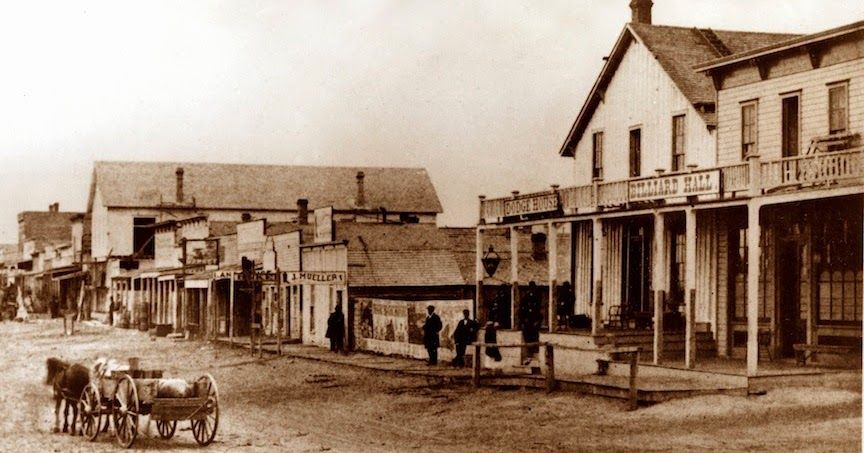
The Wichita Beacon on May 24, 1876 reported: “Wyatt Earp has been put on the police force at Dodge City.” In 1877 a local news report cited Wyatt Earp as a Dodge City Marshal.
Wyatt was in and out of Dodge City for about seven years. While in Dodge, Wyatt became friends with Bat Masterson. He also took part in posses.
It’s thought during this time he may have gone to Deadwood SD for a time. He rode shotgun for stage-coach companies on occasion.
Wyatt & Doc Holliday
A July 7, 1877 Dodge City Times article shows Wyatt rehired as an officer on his return to town. In January 1878, he’s reported in Fort Clark, Texas. On this trip, it’s thought he first encountered Doc Holliday. Doc was in Texas about that time. It’s likely they met in Fort Griffin, while Wyatt was on his Texas travels.
Wyatt returned to Dodge City in May and rehired as Assistant Marshal. Again he left town in December 1878. Returning to Dodge City May 1879, rehired to the Marshal force.
Doc Holliday had also come to town. For gambling opportunities. Texas cowboys came into town causing a ruckus at the Long Branch Saloon. Two pinned their guns at Wyatt’s head: Ed Morrison and Tobe Driskill. From the rear card room, Doc heard the commotion. Appearing behind these cowboys, Doc had them in his gun-sight. Wyatt took them into custody. From that moment, Doc Holliday became Wyatt Earp’s best friend for life. However, it is a myth from the Tombstone movie that Wyatt wrote a book titled “My Friend Doc Holliday“.
In September of 1879 Wyatt Earp finally said good-bye to Dodge City, ending up in Las Vegas, New Mexico. Remaining there until he headed for Arizona, where his Next Law Hire would be.
On one last visit to Dodge City, a photograph was taken at Conkling Studio. The National Police Gazette published it July 21, 1883. He appears in the photo of “The Dodge City Peace Commission.”
Fan of Wyatt Earp? Want some more detail on his life?
Here are some recommended items – we have an edition of the “Speaks” book (excellent info)…
- Have seen American Experience, Michael Murphy narration – well worth it!
- Costner movie – starts out well, pretty accurate, veers off the truth more-so at the end. Still recommended!
- Another great read we have is A Wyatt Earp Anthology: Long May His Story Be Told>
Wyatt Earp in Tombstone Arizona
Wyatt was in Las Vegas New Mexico with Mattie Blaylock. His friend Doc Holliday was in town, with his girlfriend, Mary Katherine Horony-Cummings. Better known as Big Nose Kate. Wyatt’s brother James and wife Bessie were along.
In November 1879, this group headed to Prescott Arizona. Wyatt’s older brother Virgil Earp lived there with his wife Allie. Virgil was Prescott’s Constable.
Virgil had accepted the position of Tombstone’s Deputy U.S. Marshal. Wyatt & Mattie and James & Bessie joined Virgil & Allie in moving to Tombstone. Virgil talked up mining town opportunities there. Doc Holliday remained in Prescott at that time. He joined his friend Wyatt in Tombstone about three months later.
The Earps arrived in Tombstone the first part of December 1879. Wyatt cooperated with his brothers finding ways to earn a living. They filed mining claims, ran gambling games, tended bar and rode shotgun for stagecoach lines.

With money coming in, Wyatt bought property for a house for himself and Mattie. Read About Their House>

Wyatt Works Tombstone Law
Wyatt occasionally helped Virgil out when he tended to his law duties. That soon put him on opposite sides of local Ranch-hands Known as Cow-boys. Which led to lots of complications and heartaches down the road.
Wyatt became a Tombstone area Deputy Sheriff on July 27, 1880. Causing him further problems for his personal life. He held the position for about four months. However, it did further His Earnings>
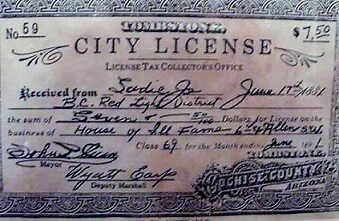
What’s Wyatt Most Famous For? – Today!

Wyatt’s law workings and entanglements effected the famous shootout: The Gunfight at the O.K. Corral. Tombstone split over backing the Earps and Doc Holliday. Just because they were lawmen, didn’t mean citizens thought they were right. The Earps and Doc gunned down three Cow-boys, killing them.
Wyatt Earp: One of the Fastest Draws in the West?
Wyatt probably used a Smith & Wesson Model 3 gun during the shoot-out. But Wyatt never had a reputation as one of “the fastest draws in the West” or anything like that! Afterwards, he never wanted to talk about his time in Tombstone, or tell the gunfight story. His interests focused on gaming, horse-racing, and traveling around, taking advantage of the next best opportunity. But here’s the Details of the Battle>
The Cow-boy faction retaliated soon afterwards. Virgil was hit by gunfire and maimed. A few months later, brother Morgan Earp was killed while playing pool.

Wyatt Earp didn’t let these events go unanswered. He gathered a posse, beginning what’s called the Earp Vendetta. He took the train transporting Morgan’s body to California for burial, to the Tucson stop. There in the rail yard Wyatt shot alleged murderer, Frank Stilwell dead, among railroad cars.
The next day a warrant was out for the arrest of Wyatt Earp for the Stilwell killing.
Wyatt returned to Cochise County, enlisting six men, including brother Warren. They hunted down others Wyatt felt helped murder Morgan. For two weeks they roamed Southeast Arizona. A coroner’s report faulted them with killing Curly Bill, Indian Charlie, and Johnny Barnes.
That report and years of rumor promoted the story that Wyatt killed Curly Bill during this Vendetta Ride. It was never proven. Wyatt later promoted that version. Another tale circulated that the posse found Johnny Ringo, and Wyatt killed him. That’s highly unlikely.
During the Vendetta Ride, the posse ended up at John Hooker’s Sierra Bonita Ranch, North of Wilcox Arizona. They got fresh horses and meals before moving on to New Mexico. To avoid arrest, Wyatt then went to Colorado, finally ending up in California.
Wyatt Earp Moves On

While still in Tombstone, Wyatt Earp became acquainted with Josephine Marcus. She’d been associated with his political rival, John Behan.
It’s difficult to track when Wyatt and Josephine’s relationship began. Josephine claimed they got married, but there’s no documentation. She used the names Mrs. J.C. Earp or Mrs. Wyatt Earp, March 1882 during California travels. There’s evidence she joined Wyatt when he settled in Albuquerque in early 1882.
They stayed together from then until Wyatt’s death. She always protected his interests. From her own viewpoint. Even if she bent the truth and both had bad habits. Still they stayed together!
Wyatt Earp – From Idaho to California
After leaving Arizona, Wyatt Earp moved around:
- July 30, 1882 he’s reported as City Marshal in Gunnison, Colorado.
- May 31, 1883 he temporarily returned to Dodge City, helping friend Luke Short.
- In 1884 Wyatt & Josie were in Eagle City Idaho. It’s booming with gold & silver mining. They opened The White Elephant Saloon & Dance Hall. Plus mining claims. Wyatt gets appointed Deputy Sheriff. In that role he’s involved in mine claim and real estate controversy.
- April 1885 Wyatt was in Chewelah Washington. Allegedly joining a group of claim-jumpers!
- In 1887 the couple are living in the Brooklyn Hotel, San Diego, California. Wyatt bought gambling saloons: the Oyster Bar at 837 5th Ave., and three others. Running his own racehorse and judging boxing matches.
- In 1891 Wyatt and Josie moved to San Francisco, nearby her sister Henrietta. Wyatt Earp’s finances were failing in San Diego real estate. He sold those properties and his racehorse. In San Francisco they lived at 145 Ellis St., 720 McAllister St., 514A Seventh Ave. and 1004 Golden Gate Ave.
| Transcribed Newspaper Article Text A Tombstone Independent reporter was informed yesterday, on presumably good authority, that Wyatt Earp is now City Marshal of Gunnison, Colorado, and his brother Warren and Doc Holiday are acting as deputies. Virg still remains in San Francisco, while Jim is running a saloon at Colton. The boys announce their intention of returning to Tombstone after the election, providing their candidate for Sheriff is elected. Diligent inquiry failed to elicit the name of the individual who will receive their support. |

Wyatt’s Notorious Boxing Judgment

The Bob Fitzsimmons vs Tom Sharkey heavyweight title fight was set for December 2, 1896. Wyatt had prior boxing experience. They chose him as referee for this San Francisco match. The whole country was in anticipation!
Fitzsimmons was favored. Through 7 rounds, he had the upper hand. But in the eighth round Wyatt saw Sharkey take a hit. He rolled on the mat, grabbing his groin. Wyatt ruled it a foul: a punch below the belt. He stopped the fight, awarding the fight to Sharkey, per the foul.
Almost all 15,000 fans in the arena booed, were up in arms! Most bet on Fitzsimmons to win. They thought it was fixed. They figured Wyatt had bet on Sharkey. With the odds so high against Sharkey, Wyatt made out! News reports across the country denounced Wyatt Earp as a crooked judge. Bringing up his prior “bad” reputation.
Fitzsimmons took the issue to court. The fight was ruled illegal. The court wouldn’t rule on a winner. Sharkey kept the prize money. Wyatt Earp had another stain on his name. In fact, this publicity gave his name more notoriety than anything else before!
At the end of December, Wyatt sold his remaining horse-racing interests. Then he and Josie left California and went to Yuma AZ. Not for long.


Wyatt Earp in the Frozen North

On August 5, 1897, Wyatt and Josie boarded a Northbound steamship. The Alaska/Yukon gold rush was on. Heading for Dawson in the Yukon to take advantage! Planning to open a gambling house.
But that October they returned to San Francisco. On their way, they stayed in Wrangell Alaska. Wyatt was recruited as their city Marshal. He stayed in the position only 10 days.
They changed to their original plan, starting for Dawson. But arriving to Rampart Alaska, everything was too frozen to move on. They rented a cabin there until Spring 1899.
Then went to St. Michael on Alaska’s West coast. There Wyatt managed a store.
Wyatt felt the Yukon gold rush was dwindling. In September 1899 he & Josie set out for Nome instead. Wyatt partnered with Charles E. Hoxie. Together they built the Dexter Saloon. A brothel upstairs.
Nome’s population was about 20,000. Wyatt’s new acquaintances included Jack London, playwright Wilson Mizner, and boxing promoter Tex Rickard. Wyatt had troubles with the local law, getting arrested twice.
Wyatt restless again, left for Seattle late 1899. He planned opening a gaming joint. Gambling was illegal in Washington. John Considine had a “blind-eye” agreement with the Police Chief. Considine owned many gambling clubs, and wasn’t happy with Earp’s business plan. Wyatt teamed with Seattle local, Thomas Urguhart. They opened a saloon/gambling hall: the Union Club.
Quite successful, even with Considine’s harrassment. But Washington state filed charges in the Spring of 1900. Their property was confiscated and destroyed.
Where is Wyatt Earp’s Gun?
Wyatt and Josie left Washington state and then within a few months, went back to Alaska. Along the way, they stopped in Juneau, before returning to Nome.

They stayed in Alaska until the end of 1901.
But that gun he’d left behind in Alaska, was it his weapon from the O.K. Corral shoot-out? Difficult to say. It’s even difficult to verify if the gun displayed in Juneau was his.
A firearm in the Arizona History Museum, near Tucson’s University of Arizona campus, also has a claim as Wyatt Earp’s. That’s also difficult to authenticate. Tombstone historian Ben Traywick, plus other old west historians, are skeptical. They have their researched reasons.5

Back to the Lower 48
In December of 1901, Wyatt Earp and Josephine Marcus left Alaska’s Frozen North. They returned to California, bringing all the money they’d made. Quite a huge sum.
They checked into the Hollenbeck Hotel in Los Angeles on December 13, 1901.
They stayed in their LA hotel for a few months. Then Wyatt and Josie headed for Nevada.

Wyatt Earp in Boom Town Nevada
Gold and silver was booming in Tonopah. Arriving in February 1902, Wyatt and Josie opened the Northern Saloon. Marshal J.F. Emmitt appointed Wyatt Deputy U.S. Marshal there.
Tonopah opportunities slowed down. The couple moved again.
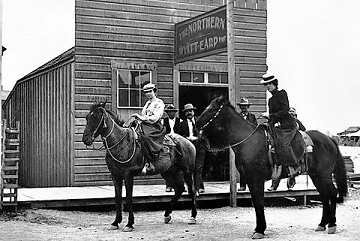
Their choice: Goldfield Nevada, where brother Virgil lived. Wyatt’s friend Tex Rickard was there, with a namesake Northern Saloon. He hired Wyatt as gambling room pit boss.
Wyatt Earp & California Mines
During 1906 Wyatt did some gold mining. He had claims throughout the California desert. From 1911 until health problems began, the couple mined.
Returning to Los Angeles in the summertime. They rented small places, breaking from desert heat.

Seems Wyatt scrambled for ways to earn money. Newsy items surfaced reporting his choices, putting him over the line of lawful methods.
About this time he did some “off the books” work for the Los Angeles Police Department. This shady dealing again got him in hot water. In October 1910 Wyatt led a posse protecting a mining company’s surveyors.
The bankrupted California Trona Company viewed Wyatt’s posse as claim jumpers. There was an armed confrontation.
So then Wyatt Earp and others involved were arrested for contempt of court.

Wyatt & Josie’s Vidal California Home
In 1925, Wyatt Earp purchased a small cottage in Vidal California. A small town a bit West of the Colorado River’s Arizona border. The only home he and Josie owned together. Wyatt worked the “Happy Days” gold mine there. In the Whipple Mountains, a little North of town.
Wyatt and Josie were getting older. In all his time after the death of his wife Urilla, and of his unborn child, Wyatt Earp never had children.
Hollywood Wyatt
During his time in Los Angeles, Wyatt became acquainted with movie makers. In 1915 Director Allan Dwan invited him to the set of “The Half Breed.” He mingled with actors, producers and directors. Wyatt commented on realism he felt was needed.
In 1916, Jack London came to Hollywood and brought him to a movie set. They went to dinner. Charlie Chaplin stopped by their table.
On movie set visits, he met cowboy actors William S. Hart and Tom Mix. They became friends with Wyatt. He’d visited silent movie sets when John Ford first worked in props. They talked about Wyatt’s Tombstone experiences. Later, Earp visited Ford’s movie sets when Ford was directing.
That’s when he met John Wayne. Wayne said he based many character personas on talks with Wyatt Earp. Wayne said “There’s a guy that actually did what I’m trying to do.”3
Wyatt encouraged friend, actor William Hart, to get a movie going based on his life. Wyatt wanted a film to reflect well on him. He wished to set the record “right” on what he described as “a public which has always been fed lies about me.”1 Hart wrote Wyatt to find a biographer to write a book first.
Telling the Story of Wyatt Earp
Wyatt talked friend, John Flood, into writing his biography. They began work in 1925. Wyatt talked, while John wrote. All the while, Josie was there for input.
Josie insisted Flood’s writing make Wyatt look just about a saint. For instance, she wanted him portrayed a non-drinker. That’s untrue. Even while in Alaska police arrested him once for drunken and disorderly conduct. She thought Flood should add the word “CRACK” for liveliness. It’s there 109 times!
When completed the following year, they submitted it to publishers. One rejected it with harsh criticism: pompous, stilted, florid.2
Wyatt’s friend, William Hart, tried to help. He submitted it to every possible publisher. Rejections continued. Even trying the Saturday Evening Post, as a periodical. Nobody wanted it.
But a few copies were made and purchased. The original stayed with Josephine. Placed with the Ford County Historical Society after her death.
In 1931 another Wyatt Earp biographical was posthumously published. Written by Stuart Lake, entitled Wyatt Earp: Frontier Marshal. Lake interviewed Wyatt eight times. He also had discussions and correspondence with Josephine.
Josie wanted the book to reflect their lives her own way. Lake didn’t cooperate with her.
The book is regarded as historical fiction, though. Lake uses made-up dialogue and doesn’t mention other wives. He glorifies all Wyatt’s actions as heroic.
It’s written in the style of the day. It’s kind of a good read!
How Did Wyatt Earp Die?
With Wyatt’s varied, and occasionally harried and dangerous, hair-raising career – did you think he’d have an adventure filled death? But it wasn’t that way. He lived a pretty long life, compared to many contemporaries. It was a substantially quiet, move-along into the “after-life” that he was likely relatively prepared for.
Wyatt Earp passed away in their rented Los Angeles cottage at 4004 West 17th Street. He was 80 years old upon taking his last breath, the morning of January 13, 1929. The Arizona Daily Star’s January 14th death notice stated his health was in decline for some time.
His brothers had already passed on. Of Earp siblings, only sister Adelia survived him. And no children. Grace Spolodori and her sister Alma made funeral arrangements. They were daughters of his old Dodge City friend Charlie Walsh.
Josephine didn’t help with arrangements, or attend the funeral. She requested Wyatt be cremated. She prepared a Jewish cemetery burial site, in The Hills of Eternity in Colma, California. She secretly took his ashes there for interment in her family plot.
The funeral was at the First Congregational Church, Wilshire Boulevard, Los Angeles. The pallbearers included John Clum (Tombstone mayor & Epitaph editor), Tom Mix, William S. Hart, George W. Parsons (Tombstone diarist), and William Mizner (Alaska friend).
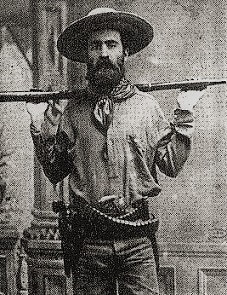
The Wyatt Earp Legacy
During his later adult lifetime, Wyatt Earp often felt he didn’t get a fair shake from the public. He especially felt his actions weren’t portrayed accurately.
There’s definitely truth to that. Some books written have vast inaccuracies about Wyatt’s life, and that of his brothers. Even newspaper articles sometimes have fantasized stories of his life.
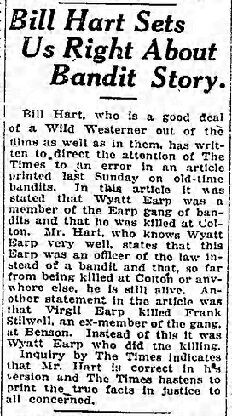
An LA Times article from March 1922 was entitled “Lurid Trails Are Left by Olden-Day Bandits.”4 It compared the Earp brothers in Tombstone to outlaw bank and train robbing gangs, such as the Daltons. Much of the story was wrong.
Josephine, and Wyatt’s friend William Hart, were both outraged. They wrote letters to the Times, demanding they print a retraction of the story’s errors. The newspaper complied.
It seems many take the extreme views. Like Josephine, they remember him as a law-abiding, heroic, saintly champion of the honest citizen. Others view him as a scoundrel who preyed on others to benefit himself, while trying to look innocent. There’s probably some middle ground there that’s the accurate assessment!
Whichever viewpoint you believe, reading about his life helps you make a judgment. Yet, there are many little details that shed light on his personality. The trouble is, sorting out fact from fiction – opinion from truth.
Visit the places he frequented. Watch movies about him, even those based on fact. Or entertain yourself, with those of fiction. Read books about his life.
Put yourself in his shoes. That may help!
References
1 Murray, Tom G. (June 1968). “Wyatt Earp’s Letters to Bill Hart”. SCVHistory.com. True West. Retrieved September 26, 2017.
2 historynet.com/john-flood-and-wyatt-earp.htm. Wild West Magazine (January 29, 2008). Retrieved September 27, 2017
3 Hughes, Johnny (2012). Famous gamblers, poker history, and Texas stories. Iuniverse. ISBN 978-1-4759-4215-6
4 Boyer, Glenn G. (Autumn 1976). “Postscripts to Historical Fiction about Wyatt Earp in Tombstone”. Arizona and the West. 18 (3): 217–236. JSTOR 40168503
5 Pleeter, Z. (2015, Oct. 8). What became of Wyatt Earp’s guns? University of Arizona School of Journalism: Arizona Sonora News Service. Retrieved from arizonasonoranewsservice.com/mystery-wyatt-earps-guns/
General References for any without notations:
- Young, R.B., Roberts, G.L., Tefertiller, C., et al. (2019). A Wyatt Earp anthology: Long may his story be told. Denton TX: University of North Texas Press.
- Barra, A. (1998). Inventing Wyatt Earp: His life and many legends. ISBN: 0-7867-0562-0. New York: Carroll & Graf Publishers, Inc.
- Gatto, S. (n.d.). Wyatt Earp History Page. Retrieved from www.wyattearp.net/
- “Earp Historical Timeline”. Retrieved from web.archive.org/web/20080211122451/http://www.gv.net:80/~syd/WyattSEarp/history.html
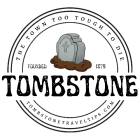









Hello,
I’m a Belgian journalist writing a book about the legends of the American West.
I discovered many interesting photos on your site, especially of Wyatt Earp and Jesse James.
Would you allow me to publish them? I’ll cite you as the source, of course.
Thank you very much.